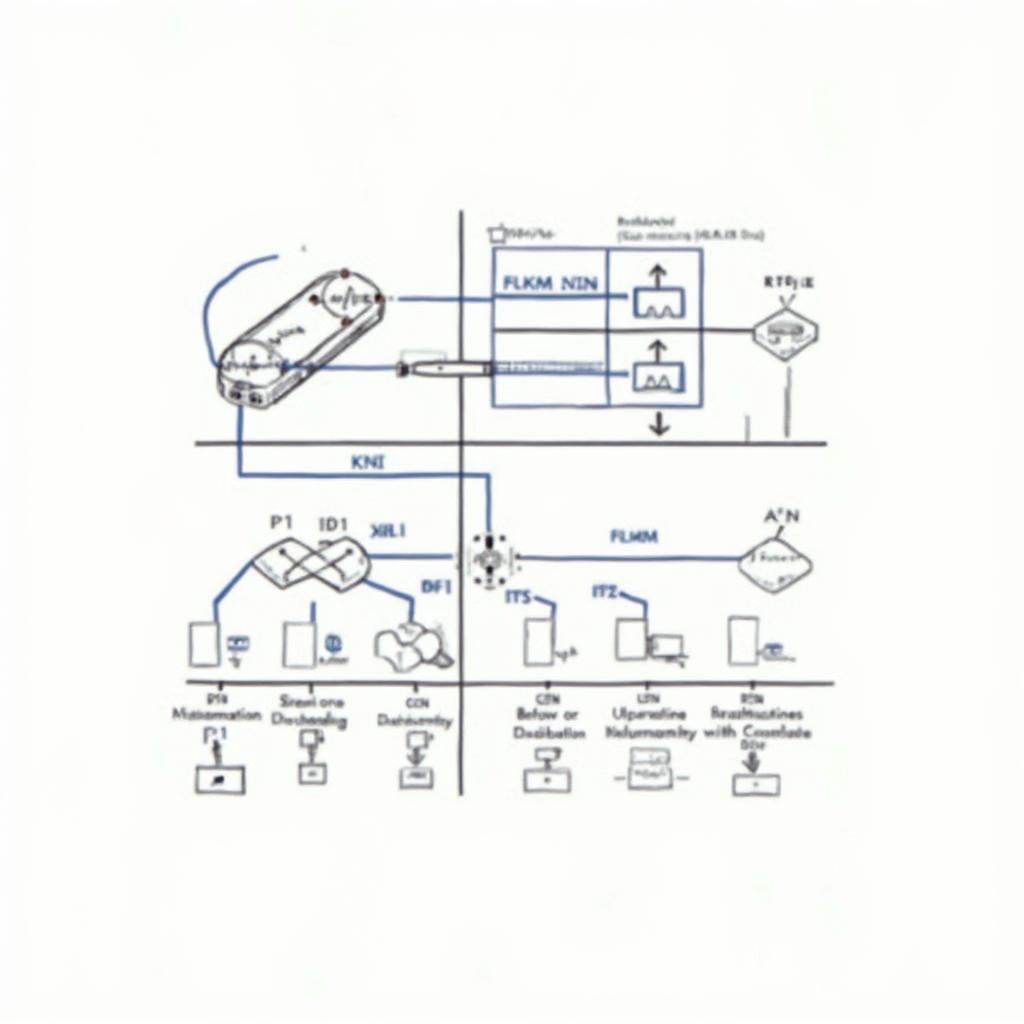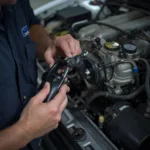The OBD2 K-Line: it might sound like a term straight out of a tech manual, but understanding its significance can empower you to unlock a deeper understanding of your vehicle’s health. In the world of automotive diagnostics, the K-Line acts as a crucial communication channel, enabling you to tap into your vehicle’s electronic brain and retrieve valuable information about its performance.
What is the OBD2 K-Line?
The K-Line is essentially a single-wire communication protocol, a core component of the OBD2 system found in most vehicles manufactured after 1996. It serves as a direct line between your vehicle’s Electronic Control Unit (ECU) and an OBD2 scanner, allowing for the exchange of diagnostic data. Think of it as a dedicated phone line for your car’s computer system.
The Role of the K-Line in Vehicle Diagnostics
The K-Line plays a pivotal role in enabling various diagnostic functions. Here’s how:
-
Retrieving Diagnostic Trouble Codes (DTCs): When your vehicle experiences an issue, the ECU generates DTCs, which act as indicators of specific problems. The K-Line allows you to access and interpret these codes using an OBD2 scanner, providing insights into the root cause of the issue.
-
Monitoring Live Data Streams: Beyond DTCs, the K-Line facilitates real-time monitoring of your vehicle’s performance parameters. This includes data such as engine speed, coolant temperature, oxygen sensor readings, and more. Accessing live data can be invaluable for identifying intermittent problems or understanding how your vehicle behaves under different driving conditions.
-
Performing Actuator Tests: The K-Line enables bi-directional communication with your vehicle’s ECU. This means that through an OBD2 scanner, you can command specific components, like actuators and solenoids, to activate. This functionality is particularly useful for testing the functionality of various systems without the need for manual intervention.
The Evolution of the K-Line and CAN Bus Systems
While the K-Line has been instrumental in vehicle diagnostics, the automotive industry is constantly evolving. Modern vehicles are increasingly adopting Controller Area Network (CAN) bus systems, offering faster and more sophisticated communication capabilities.
However, despite the rise of CAN, the K-Line still holds relevance. Many vehicles utilize a hybrid approach, incorporating both K-Line and CAN systems for different modules. Additionally, some manufacturers continue to employ the K-Line for specific diagnostic procedures.
Choosing the Right OBD2 Scanner for K-Line Access
Selecting the appropriate OBD2 scanner is crucial to leverage the capabilities of the K-Line. Here are some factors to consider:
-
Protocol Compatibility: Ensure that the scanner explicitly states its compatibility with the K-Line protocol. Not all scanners support this older communication standard.
-
Functionality: Determine your diagnostic needs. If you require access to live data, actuator tests, or advanced functions beyond basic code reading, opt for a scanner with those capabilities.
-
User Interface: Choose a scanner with an intuitive user interface that suits your technical proficiency. Some scanners offer graphical displays and user-friendly menus, while others might require a deeper understanding of diagnostic protocols.
Conclusion
The OBD2 K-Line, while an older communication protocol, continues to be a valuable asset in vehicle diagnostics, particularly for older models and specific applications. Understanding its role in retrieving diagnostic trouble codes, monitoring live data, and performing actuator tests empowers vehicle owners and technicians to gain deeper insights into a vehicle’s health. When choosing an OBD2 scanner, always ensure compatibility with the K-Line protocol and select a device that aligns with your diagnostic requirements.


